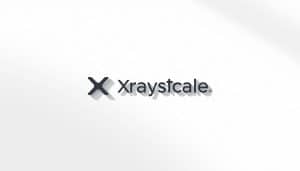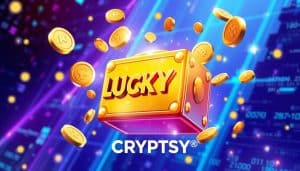You’ve probably heard the buzz about Layer 2 blockchain tokens, but maybe you’re not quite sure what all the fuss is about. Well, let me tell you, these tokens are changing the game in crypto.
I remember when I first stumbled across them – it was like finding a secret passageway in an old building, opening up a whole new world of possibilities.

Layer 2 tokens are built on top of existing blockchains, kinda like adding an extra floor to a house. They’re designed to make transactions faster and cheaper, which is a big deal when you’re trying to use crypto in real life.
The best Layer 2 blockchain tokens can process thousands of transactions per second while keeping fees under a dollar. That’s a far cry from the slow, expensive transactions you might be used to on some main networks.
You might be wondering which tokens are worth your time. Well, there’s a bunch out there, but some of the heavy hitters include Polygon, Arbitrum, and Optimism.
These guys are building on Ethereum, making it easier for you to use without breaking the bank on fees. And hey, they’re not just for show – people are actually using these networks for all sorts of stuff, from buying digital art to trading tokens.
Key Takeaways
- Layer 2 tokens improve blockchain speed and lower costs
- Popular platforms like Polygon and Arbitrum lead the pack
- These tokens are gaining real-world use and adoption
Understanding the Foundation: Layer-1 vs. Layer-2
Layers in blockchain are like the floors of a building. Each one has its job, but they work together to make the whole thing stand strong. Let’s take a closer look at how these layers function.
The Role of Layer-1 Networks
You’ve probably heard of Bitcoin and Ethereum. These are Layer 1 blockchains, the foundation of the crypto world. They’re like the ground floor of our building, handling all the basics.
Layer 1 does the heavy lifting. It processes transactions, keeps everything secure, and makes sure everyone agrees on what’s happening. But here’s the thing – it can get slow when too many people try to use it at once.
Think of it like a busy highway. More cars mean more traffic. In blockchain terms, that means higher fees and slower transactions. Not ideal when you’re trying to send money to your buddy for last night’s pizza.
The Emergence of Layer-2 Solutions
This is where Layer 2 comes in. It’s like adding an express lane to that highway. Layer 2 solutions work on top of Layer 1, taking some of the load off.
These solutions are pretty clever. They process transactions off the main chain, then bundle them up and send them back. It’s faster and cheaper, which is great news for your wallet.
Imagine you’re at a busy bar. Instead of everyone lining up to order one drink at a time, you send one person to get drinks for the whole group. That’s Layer 2 in action – more efficient, less crowded.
Some popular Layer 2 solutions include Polygon and Optimism. They’re making it possible to use blockchain for everyday stuff without breaking the bank on fees.
The Mechanics of Layer-2 Tokens
Layer-2 tokens power scalable blockchain networks, supercharging transaction speeds and slashing fees. They’re the turbochargers of the crypto world, revving up sluggish chains.
How Layer-2 Tokens Function
You’ve probably noticed how slow and pricey transactions can get on main blockchains. That’s where layer-2 tokens come in clutch. They work by processing transactions off the main chain, then bundling them up and sending summaries back. It’s like carpooling for crypto – way more efficient.
These tokens often act as gas fees on their networks. You might pay just pennies in layer-2 tokens to zip through a transaction that’d cost you $20+ on Ethereum. I remember the first time I used Polygon – my jaw dropped at how fast and cheap it was compared to the mainnet.
Layer-2 tokens also incentivize network participation. Staking them can earn you rewards, kinda like how you’d earn interest in a savings account (but potentially way juicier).
The Relationship between Tokens and Scalability
Layer-2 tokens are the secret sauce that makes these networks so dang scalable. They grease the wheels, letting transactions fly through at mind-boggling speeds.
We’re talking thousands of transactions per second (TPS) in some cases, compared to Ethereum’s measly ~15 TPS.
The more people use and hold these tokens, the more secure and efficient the network becomes. It’s a virtuous cycle – increased adoption leads to better performance, which attracts more users. You can see this playing out with projects like Arbitrum and Optimism, which are growing like weeds.
But it’s not just about speed. These tokens enable complex smart contracts and dapps that’d be too expensive to run on layer-1. They’re opening up whole new worlds of blockchain innovation, from lightning-fast DEXes to ultra-efficient NFT marketplaces.
Leading Layer-2 Blockchain Platforms
Layer-2 solutions are changing the game for blockchain scalability and efficiency. These platforms are tackling the biggest challenges faced by major networks like Ethereum, making crypto more accessible and practical for everyday use.
Arbitrum and Its Revolutionary Approach
You’ve probably heard whispers about Arbitrum in crypto circles. It’s not just hype – this Layer-2 solution is the real deal.
Arbitrum uses a clever trick called optimistic rollups to speed things up and slash those pesky gas fees.
I remember when I first tried an Arbitrum transaction. My jaw dropped. It was like going from dial-up to fiber internet overnight. Transactions that used to cost $50+ on Ethereum mainnet suddenly cost pennies. And they’re lightning fast too.
Arbitrum’s not perfect though. There’s still some centralization risk with the sequencer. But the team’s working on it. They’ve got this thing called Arbitrum Nitro that’s supposed to make things even faster and cheaper. Keep an eye on that.
Polygon’s Matic Network and Its Impact
Polygon (formerly Matic) is like the Swiss Army knife of Layer-2 solutions. It’s not just one scaling solution – it’s a whole toolkit.
You’ve got the Polygon PoS chain, zk-rollups, optimistic rollups… the works.
I’ve been using Polygon for a while now, especially for DeFi stuff. The fees are so low, it’s almost ridiculous. We’re talking fractions of a cent per transaction. And it’s fast. Really fast. Like, blink-and-you’ll-miss-it fast.
But here’s the thing – Polygon’s not just about cheap, fast transactions. They’re building this whole ecosystem. NFTs, gaming, DeFi – you name it, Polygon’s got it. And big names are taking notice. Meta (formerly Facebook) is even using Polygon for their NFT platform.
Optimism and Simplifying Transactions
Optimism’s like that quiet kid in class who suddenly reveals they’re a genius. Their approach to Layer-2 scaling is, well, optimistic. They assume transactions are valid until proven otherwise. It’s a bit like “innocent until proven guilty” but for blockchain.
I tried Optimism for the first time last month. The user experience was smooth as butter. No complicated bridges or confusing interfaces. Just simple, fast, and cheap transactions.
One thing that stands out about Optimism is their commitment to Ethereum compatibility. If you can do it on Ethereum, you can probably do it on Optimism. That’s huge for developers and users alike.
They’ve also got this interesting governance model with their OP token. It’s not just about voting – it’s about building a whole community-driven ecosystem. Time will tell how it plays out, but it’s an exciting experiment to watch.
Immutable X: A New Era of NFTs
If you’re into NFTs, you need to know about Immutable X. This Layer-2 solution is tailor-made for NFTs and gaming. And let me tell you, it’s a game-changer.
I minted an NFT on Immutable X last week. The process was so smooth, I thought something had gone wrong. No gas fees. Instant transactions. It was almost too good to be true.
Immutable X uses zk-rollups, which is a fancy way of saying they can process a ton of transactions off-chain while still maintaining Ethereum-level security. For NFT marketplaces and blockchain games, this is huge.
We’re talking about thousands of transactions per second with near-zero gas fees.
Big names in gaming are already jumping on board. Gods Unchained, Guild of Guardians – these aren’t just experiments anymore. They’re full-fledged games with real economies, all powered by Immutable X.
Evaluating Token Performance
You’ve got to look at more than just the hype when sizing up Layer 2 tokens. Market cap and trading stats tell the real story. Numbers don’t lie, but they can sure be tricky to interpret sometimes.
Market Cap Reflections
The market cap of a Layer 2 token can be a real eye-opener. Take Polygon, for instance. With a market cap north of $7 billion, it’s like the big fish in a small pond.
You might think that’s impressive, but remember, size isn’t everything in crypto. I once thought a token was a sure bet because of its hefty market cap, only to watch it tank faster than you can say “HODL”.
What you really want to look at is how the market cap stacks up against the token’s utility. Is it all hot air, or is there substance behind those numbers?
Trading Volumes and Transaction Costs
Now, let’s talk about the nitty-gritty: trading volumes and fees. You’d be surprised how much these can vary.
I remember trying to swap some tokens on a Layer 2 solution, thinking I’d save a bundle on gas fees. Boy, was I in for a shock when I saw the actual costs!
Layer 2 solutions are supposed to be all about scaling and cutting down those pesky transaction fees. But you’ve got to do your homework.
Some Layer 2s might boast high trading volumes, which can be a good sign of liquidity. But watch out for those that seem too good to be true – they might be inflating their numbers.
When you’re evaluating a Layer 2 token, dig into the real-world transaction costs. Are users actually saving money? That’s the million-dollar question (or should I say, the fraction-of-a-cent question?).
Technological Innovations: Rollups and Beyond
You’ve probably heard the buzz about rollups and zero-knowledge proofs. These aren’t just fancy tech terms – they’re game-changers for blockchain scalability and privacy.
Let’s take a closer look at how they work.
A Deep Dive into Rollups
Rollups are like blockchain carpools. They bundle up tons of transactions off-chain, then submit them to the main chain as one big package.
Pretty smart, right?
There are two main flavors: optimistic and zero-knowledge (ZK) rollups.
Optimistic rollups assume transactions are valid unless proven otherwise. They’re faster to set up but have longer withdrawal times (about a week).
Arbitrum is a big player here, processing up to 4,000 transactions per second. That’s way better than Ethereum’s measly 15!
ZK rollups, on the other hand, use math wizardry to prove transactions are legit without revealing the details. They’re trickier to build but offer near-instant withdrawals.
zkSync is making waves in this space.
Exploring Zero-Knowledge Proofs
Zero-knowledge proofs are like showing your ID at a bar without revealing your birthday. You prove you’re old enough without giving away personal info.
Cool, huh?
In blockchain, this tech lets you verify transactions while keeping data private. It’s a big deal for things like voting systems or financial transactions where you want security without sacrificing privacy.
StarkWare is pushing the boundaries here. They’re using ZK-STARKs, a souped-up version of zero-knowledge proofs, to handle thousands of transactions per second while keeping everything hush-hush.
The best part? This tech isn’t just for crypto nerds. It could revolutionize how we handle sensitive data across industries. Keep an eye on this space – it’s where the real innovation is happening.
User Interaction and Network Effects
You’ve probably noticed how Layer 2 tokens are changing the game. They’re making blockchain tech easier to use and more widespread.
It’s like watching a digital revolution unfold right before your eyes.
Enhancing the User Experience
Remember when you first tried using a decentralized app? It was probably slow and expensive.
Well, Layer 2 tokens are fixing that. They’re making transactions faster and cheaper.
You can now swap tokens or buy NFTs without breaking the bank.
I tried an L2-based decentralized exchange last week. The difference was night and day. Trades went through in seconds, not minutes. And the fees? Barely noticeable.
It’s this kind of smooth experience that’s drawing more people to Web3.
Layer 2 solutions are also making wallets smarter. You don’t need to worry about which network you’re on anymore. Your wallet just figures it out.
It’s like having a personal crypto assistant.
The Token’s Journey from Wallets to Dapps
You might wonder how these tokens actually move around. It’s pretty cool, actually.
When you send a token from your wallet to a dapp, it doesn’t really “move” in the traditional sense.
Instead, the Layer 2 network updates its records. It’s like changing the name on a deed, but way faster.
This process happens in milliseconds, and it’s all secured by the main blockchain (usually Ethereum).
The best part? You don’t even need to think about it. The dapp and your wallet handle all the technical stuff. You just click “send” and boom, your transaction is done.
It’s this simplicity that’s making decentralized finance accessible to everyone, not just tech wizards.
Token Security and Decentralization
You’ll find that security and decentralization are the pillars of Layer 2 blockchain tokens. These aspects work together to protect your assets and uphold the core principles of blockchain technology.
Security Measures for Peace of Mind
When you’re dealing with Layer 2 tokens, you’ve got to think about security. It’s like locking your front door, but way more high-tech.
Most Layer 2 networks use something called “rollups” to keep your tokens safe. These rollups bundle up transactions and post them to the main chain (usually Ethereum) in batches.
You might wonder, “How secure is this really?”
Well, pretty darn secure. Rollups inherit the security of the main chain, which means your tokens are as safe as houses.
Some Layer 2 solutions even use fancy math (zero-knowledge proofs, if you’re curious) to add an extra layer of protection.
But here’s a tip: always do your homework. Check out the security audits of any Layer 2 project you’re thinking about using. It’s like reading reviews before buying a car – you want to know what you’re getting into.
Decentralization: A Core Philosophy
Now, let’s talk decentralization. It’s the heartbeat of blockchain, right? But when it comes to Layer 2, things can get a bit… complicated.
You see, some Layer 2 solutions are more decentralized than others. It’s a spectrum, not a black-and-white thing.
State channels, for instance, are pretty darn decentralized. They’re like private chat rooms for transactions – just you and the other party. On the flip side, some sidechains might be less decentralized, with a smaller group of validators.
You might ask, “Does this matter?”
Well, yeah, it does. More decentralization usually means more security and censorship resistance. It’s like having a bunch of different locks on your door instead of just one.
When you’re picking a Layer 2 token, look at how decentralized the network is. How many validators are there? Who controls the upgrades? These questions might seem boring, but they’re crucial for the long-term health of your investment.
Practical Considerations for Token Investors
Investing in Layer 2 blockchain tokens requires careful thought and strategy. You’ll need to weigh potential returns against risks, and think about how these new assets fit into your wider portfolio.
Assessing Investment Potential
When eyeing Layer 2 tokens, you’ve got to look beyond the hype. I remember chatting with a buddy who dumped his savings into a flashy new L2 project without checking the basics. Big mistake.
Start by examining the token’s utility. Does it power actual transactions on the network? That’s key.
Transaction speed and throughput matter too. You want a token that can handle high volumes quickly. I once saw an L2 network process 10,000 transactions per second – mind-blowing stuff.
Check the team behind the project. Solid devs with blockchain experience are a good sign. And don’t forget tokenomics. A token with a clear distribution plan and low inflation rate (say, under 5% annually) might be worth a closer look.
Strategies for Diversifying Cryptocurrency Portfolios
Putting all your eggs in one basket? Not smart in crypto. You might want to spread your bets across different Layer 2 projects.
Maybe allocate 30% to established names like Arbitrum (ARB) and the rest to promising newcomers.
Consider pairing L2 investments with some Layer 1 holdings for balance. Ethereum’s still the big player, after all. And don’t forget about risk management. Stop-loss orders can be your friend in volatile markets.
Keep an eye on upcoming developments too. A friend of mine scored big by investing in an L2 token just before a major upgrade boosted its price. Timing matters in this game.
Remember, the crypto market moves fast. What’s hot today might be old news tomorrow. Stay informed, but don’t chase every trend. Your portfolio will thank you.
The Future Landscape of Layer-2 Tokens
Layer-2 tokens are set to revolutionize blockchain technology, addressing key issues of scalability and efficiency. You’ll see these solutions tackle network congestion and skyrocketing transaction costs, paving the way for wider crypto adoption.
Predicting Trends and Movements
You might’ve noticed how Layer-2 projects are gaining traction fast. Take Arbitrum, for instance – it’s processing a whopping 2,000-4,000 transactions per second. That’s lightning-quick compared to traditional blockchain speeds. And it’s not just about speed, fees are dropping too.
I remember paying $50 for a single Ethereum transaction back in 2021. Now, with Layer-2 solutions, you’re looking at cents instead of dollars. It’s like night and day.
As more users flock to these platforms, you’ll likely see a surge in token values. Keep an eye on projects with strong communities and innovative tech – they’re the ones poised for growth.
The Role of Layer-2 in Mainstream Adoption
Layer-2 solutions might just be the key to unlocking widespread crypto use. Why? They’re making blockchain tech more user-friendly and cost-effective.
Think about it – would you use a payment system that charges $20 per transaction? Probably not. But what if it cost just a few cents? That’s the promise of Layer-2.
You’re already seeing big companies dipping their toes in. They’re attracted by the improved scalability and efficiency these solutions offer. As more businesses jump on board, you’ll likely see a domino effect of adoption.
For you, the everyday user, this means easier, cheaper, and faster crypto transactions. It’s not just about trading anymore – think decentralized apps, gaming, and even social media built on these platforms.
Frequently Asked Questions
Layer 2 blockchain tokens are like the underdogs of the crypto world, often overlooked but packing a punch when it comes to scaling solutions. You might be scratching your head, wondering how to navigate this complex landscape. Don’t worry, I’ve got you covered.
What to know before funneling my hard-earned cash into Layer 2 crypto investments?
Before you dive in, you gotta understand the risks. Layer 2 projects are still new, and the tech is evolving fast. You might see wild price swings – I once saw a token drop 30% in an hour!
Do your homework, check the project’s fundamentals, and never invest more than you can afford to lose.
Top contenders for a spot in my investment portfolio: which Layer 2 tokens are leading the pack?
Right now, the big players are turning heads. Loopring, Dymension, and Starknet are making waves. But don’t sleep on Polygon (MATIC) – it’s not technically a Layer 2, but it’s bridging gaps left and right. Each has its strengths, so you’ll want to dig into their tech and adoption rates.
Chasing the crypto wave, I’m curious—what potential do Ethereum’s Layer 2 coins hold?
Ethereum’s Layer 2 solutions are like nitro boosters for a sports car. They’re aiming to solve Ethereum’s speed and cost issues.
Some projects are seeing transaction fees drop to mere cents – a far cry from Ethereum’s sometimes eye-watering gas prices. The potential? Massive. But it’s a crowded field, and not all projects will make it to the finish line.
A friend mentioned second-layer solutions increasing a blockchain’s power, which sparks the question: how do I distinguish between Layer 1 and Layer 2 tokens?
Think of Layer 1 as the foundation of a house, and Layer 2 as the extensions built on top. Layer 1 is your Bitcoin, Ethereum – the base blockchains. Layer 2? They’re the add-ons that make things faster and cheaper.
Layer 2 solutions process transactions off the main chain, then bundle them back to the Layer 1 for security. It’s like carpooling for transactions.
With a market as volatile as the winds in March, where do Layer 2 projects stand, following Bitcoin’s lead?
Layer 2 projects often dance to Bitcoin’s tune, but they’ve got their own rhythm too. When Bitcoin surges, you might see Layer 2 tokens follow suit. But they can also break away – I’ve seen some Layer 2 projects pump while Bitcoin was taking a nap.
Keep an eye on adoption rates and partnerships, they can move the needle independently of BTC.
Can Solana claim fame in the Layer 2 space, or does it swing to a different blockchain tune?
Solana’s a different beast altogether. It’s not a Layer 2 – it’s a high-speed Layer 1 blockchain.
While Layer 2 solutions are built on top of existing chains, Solana’s doing its own thing, trying to solve scalability issues right out of the gate.
It’s fast and cheap, but it’s playing in a different league than Ethereum’s Layer 2 solutions.
























 Bitcoin
Bitcoin  Ethereum
Ethereum  Tether
Tether  XRP
XRP  USDC
USDC  Wrapped SOL
Wrapped SOL  Lido Staked Ether
Lido Staked Ether  TRON
TRON  Dogecoin
Dogecoin  Cardano
Cardano  Figure Heloc
Figure Heloc  WhiteBIT Coin
WhiteBIT Coin  Wrapped stETH
Wrapped stETH  Bitcoin Cash
Bitcoin Cash  Wrapped Bitcoin
Wrapped Bitcoin  USDS
USDS  Chainlink
Chainlink  Wrapped eETH
Wrapped eETH  Binance Bridged USDT (BNB Smart Chain)
Binance Bridged USDT (BNB Smart Chain)  LEO Token
LEO Token  WETH
WETH  Hyperliquid
Hyperliquid  Monero
Monero  Stellar
Stellar  Zcash
Zcash  Ethena USDe
Ethena USDe  Coinbase Wrapped BTC
Coinbase Wrapped BTC  Litecoin
Litecoin  Sui
Sui  Avalanche
Avalanche  Hedera
Hedera  Shiba Inu
Shiba Inu  sUSDS
sUSDS  USDT0
USDT0  Dai
Dai  Mantle
Mantle  PayPal USD
PayPal USD  Toncoin
Toncoin  World Liberty Financial
World Liberty Financial  Cronos
Cronos  Ethena Staked USDe
Ethena Staked USDe  Uniswap
Uniswap  Polkadot
Polkadot  MemeCore
MemeCore  Aave
Aave  USD1
USD1  Bittensor
Bittensor  Rain
Rain